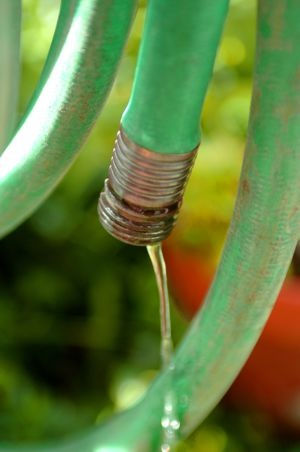How to Prevent Common Issues in Directional Boring Projects?
- Grid Tech
- Dec 20, 2023
- 3 min read
Directional boring is a highly effective trenchless method used for installing utilities such as pipes, cables, and conduits underground. Its ability to minimize disruption to the surrounding environment makes it a preferred choice for various construction and infrastructure projects.
However, like any construction technique, directional boring is not without its challenges. Common issues can arise during directional boring projects, leading to delays, increased costs, and frustration.
So today, here in this comprehensive blog, we will be going to talk about these common problems and provide actionable solutions to prevent them. Whether you are a contractor, project manager, or someone curious about this innovative technique, read on to ensure your directional boring project goes off without a hitch.

Preventing Common Issues in Directional Boring Projects
Directional boring, also known as horizontal directional drilling (HDD), is a versatile and efficient method for installing underground utilities. To ensure the success of your directional boring project, it is crucial to identify and address common issues that can arise during the process. By proactively implementing preventive measures, you can save time, money, and resources.
In this article, we will discuss 10 most common problems associated with directional boring projects and provide practical solutions for each.
Insufficient Site Assessment:
The Problem: Many directional boring issues stem from inadequate site assessment. Failing to thoroughly evaluate the soil conditions, terrain, and potential obstacles can lead to unexpected challenges during drilling.
The Solution: Before commencing any directional boring project, conduct a comprehensive site assessment. Utilize ground-penetrating radar (GPR) and soil testing to identify potential obstacles and subsurface conditions. This data will inform your drilling plan and reduce the risk of encountering unexpected issues.

Equipment Malfunctions:
The Problem: Equipment breakdowns can cause project delays and increased costs. Preventative maintenance is often overlooked, leading to avoidable disruptions.
The Solution: Implement a strict maintenance schedule for all directional boring equipment. Regular inspections and servicing will ensure that your machinery operates smoothly throughout the project.
Inadequate Bore Path Planning:
The Problem: Poor bore path planning can result in deviations, intersecting utility lines, or incorrect exit points, leading to costly corrections.
The Solution: Invest time in meticulous bore path planning. Use advanced bore planning software to create accurate bore profiles, avoid obstacles, and ensure the correct alignment and depth.
Unforeseen Utility Interferences:
The Problem: Hitting existing utility lines is a common issue in directional boring. This can disrupt services, cause safety hazards, and incur substantial repair costs.
The Solution: Before drilling, conduct thorough utility locates and consult with local utility companies. Use technologies like electromagnetic locators to identify and mark the precise locations of existing utilities, reducing the risk of interference.
Fluid Loss and Fracturing:
The Problem: Loss of drilling fluid or fracturing in the borehole can lead to instability and the potential collapse of the borehole.
The Solution: Maintain proper drilling fluid levels and pressure throughout the drilling process. Monitoring equipment can detect fluid loss early, allowing for timely adjustments. Implementing quality control measures during drilling can prevent fracturing.

Environmental Impact:
The Problem: Directional boring projects can have environmental impacts if not managed responsibly, leading to regulatory issues and public concerns.
The Solution: Comply with all environmental regulations and obtain necessary permits. Implement erosion control measures and use environmentally friendly drilling fluids when possible. Communicate your environmental responsibility to stakeholders.
Safety Violations:
The Problem: Ignoring safety protocols and procedures can result in accidents and injuries on the job site.
The Solution: Prioritize safety at all times. Conduct regular safety training for your team, and ensure they use personal protective equipment (PPE) and follow established safety guidelines.
Communication Breakdown:
The Problem: Poor communication among team members and stakeholders can lead to misunderstandings, delays, and mistakes.
The Solution: Establish clear lines of communication within your team and with project stakeholders. Regularly update all parties on project progress, challenges, and changes in plans.
Inadequate Record-Keeping:
The Problem: Insufficient documentation can lead to disputes, legal issues, and difficulties in assessing project performance.
The Solution: Maintain detailed records of all project activities, including site assessments, bore path plans, equipment maintenance, safety training, and any issues encountered. Accurate records can help resolve disputes and improve future project planning.
Budget Overruns:
The Problem: Exceeding the budget can strain project finances and impact profitability.
The Solution: Create a realistic budget with contingency allowances for unforeseen issues. Monitor project expenses closely and make adjustments as needed to stay within budget.

The Final Word
Directional boring projects offer a versatile and efficient solution for installing underground utilities, but they come with their share of challenges. By proactively addressing common issues such as inadequate site assessment, equipment malfunctions, and communication breakdowns, you can minimize disruptions and ensure the success of your projects. Remember to prioritize safety, environmental responsibility, and meticulous planning.
So, with the right preventive measures in place, directional boring can be a cost-effective and reliable method for various construction and infrastructure needs.
By following these guidelines, you will be better equipped to navigate the complexities of directional boring and achieve successful outcomes for your projects.

Comments